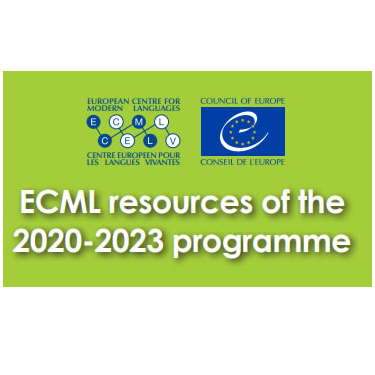Inspiring innovation in language education

E-Lang Citizen – Digital citizenship through language education
The E-lang citizen platform provides a comprehensive toolkit to integrate digital literacy into language education, fostering the critical thinking and ethical behaviour needed in today’s interconnected society. Resources include:
- A portrait of language and digital technology users to explore with learners
- A pedagogical framework for the development of digital citizenship
- A database of concrete and practical learning activities
- A bilingual glossary and bibliography.
TePA – Developing teacher competences for pluralistic approaches – Tools for teacher education
The TePA website equips teacher educators and teachers with essential skills to embrace linguistic and cultural diversity in the classroom, fostering inclusive and enriching learning environments for all students. It also provides a wealth of resources for designers of teacher education programmes, including:
- practical tools for integrating pluralistic approaches
- comprehensive training materials for professional development
- insights into promoting intercultural understanding and multilingualism
METLA – Mediation in teaching, learning and assessment
The METLA resources propose innovative and engaging ways in which foreign language teachers in primary and secondary education can include language mediation in their everyday classroom practice. They provide essential information about language mediation, examples of cross-linguistic mediation tasks and step-by-step guidelines on how to design and evaluate language mediation tasks. Resources include:
- A teaching guide for foreign language teachers with information about what mediation entails, how it can be taught and types of mediation tasks
- A database with cross-linguistic mediation tasks in different languages for different contexts
- A bilingual glossary for mediation and plurilingualism
- A bibliography of sources consulted for the teaching guide
Building blocks for planning language-sensitive teacher education
The "Building Blocks" resources are designed to support teacher educators and curriculum planners working with teachers across all languages and subjects, offering practical and systematic guidance for embedding language-sensitive education into teacher education curricula and courses. Resources include:
- Guidelines for reviewing and developing teacher education curricula
- Model tasks for curriculum orientation, reflection and design
- Profiles of teacher competences for language sensitive education
RECOLANG – Resources for assessing the home language competences of migrant pupils
The RECOLANG website aims to support the social and institutional recognition of home languages and to enhance migrant learners’ plurilingual repertoires in secondary education. It does so by rethinking language assessment, particularly for languages with limited resources which focus on assessment and those not integrated into national education systems, and by encouraging methods of assessment that are tailored to different learning groups and learning pathways. Resources include:
- Rationale and principles for formative assessment of learners’ home languages
- Assessment scenarios for different types of learners and educational contexts
- Examples of assessment approaches, practices and materials
Enhancing language education in cross-border vocational education
The website focuses on how to best promote language education in border regions, especially in professional and vocational education. It offers practical guidance for developing plurilingual and intercultural competences in vocational settings, including:
- An online guide with interactive tasks and activities for educators in cross-border environments, working with learners in vocational education or with adults in professional education
- A teacher and learner portfolio, based on the European Language Portfolio
- Insights into 5 border regions (Germany-France-Luxembourg-Belgium, Germany-Denmark, Poland-Czechia, Lithuania-Poland-Latvia, Sweden-Finland)
- A bilingual glossary
CLIL in languages other than English – Successful transitions across educational stages
The CLIL transitions website supports the professional community in promoting continuity and dealing with discontinuities in Content and Language Integrated Learning (CLIL) from primary to secondary and tertiary education.Resources include:
- Recommendations, curriculum guidelines and teaching materials
- llustrative models and scenarios from different organisational settings
- A bibliography on CLIL, CLIL in languages other than English, CLIL and transitions, CLIL and plurilingual education
- A trilingual glossary of key CLIL-LOTE terms
PALINGUI – Young children’s language learning pathways – Making early language learning visible
The PALINGUI website encourages teachers and educators working with children aged 3 to 12 to make all language learning of the children visible within their education system through observation, documentation, and assessment. It offers essential information about early language learning, as well as tools and tasks that will help to observe, document, and assess young children's language learning pathways in a multilingual context.
VITbox – CEFR Companion Volume implementation toolbox
The VITbox website provides practical insights to apply the innovative aspects of the Council of Europe’s ground-breaking Common European Framework of Reference Companion Volume (CEFR-CV) in language learning, teaching and assessment – with a focus on the vocational and university sectors. The toolbox offers:
- guidance on using and disseminating key concepts of the CEFR-CV
- easily accessible modules with a wide range of explanatory videos to facilitate access to key concepts
- adaptable teaching materials: short videos and sample tasks for teacher education, checklists, templates and adaptable sample classroom materials.
Further reading
Additional information
-
Age from:4
-
Age to:18
-
Target audience:TeacherStudent TeacherTeacher Educator
-
Target audience ISCED:Early childhood education (ISCED 0)Primary education (ISCED 1)Lower secondary education (ISCED 2)Upper secondary education (ISCED 3)Post-secondary non-tertiary education (ISCED 4)
